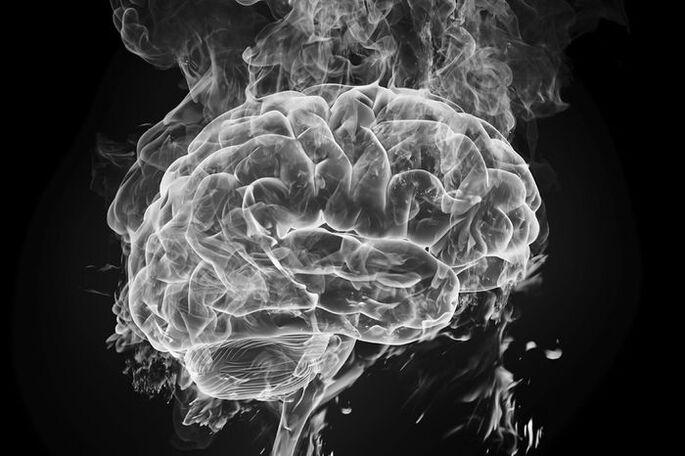
One only has to put down a cigarette today, since in a few hours a person will notice what changes will begin to occur to him. How to quit smoking is a topic that interests everyone who decides to face this addiction. And for good reason!
Emotions, thoughts, physiological state: everything will start to change when you stop smoking. It is an interesting and rewarding adventure that is worth its incredible results.
What happens when you quit nicotine? What is the body's reaction to such a fundamental decision? When to expect the first positive results if you completely and irrevocably quit smoking?
Therefore, the full recovery of the body after parting with tobacco will take place no earlier than twelve months later. However, every day a person will notice certain improvements in their condition. During this period, the main task of those who decided to quit smoking is not to change their goal, even when it is difficult, and to support the body in every possible way.
Upgrade overview
Let's try to compose a kind of review of improvements per day, month, taking into account physiological changes in the body, emotional state, human reaction to what is happening.
First day
Despite the bad dream, quitting smoking begins to make you proud of yourself, your desire to get rid of the addiction. He still does not feel obvious discomfort. It would seem that nothing happens, but in fact it is observed:
- reduction of carbon monoxide in blood;
- increased oxygen content in tissues.
Second day
So what happens on the second day? This is the day when irritability is possible, however, drowsiness is replaced by an increase in energy. For quitting smoking, the following is typical:
- there is an improvement in lung function due to a decrease in mucus production;
- there are signs of nicotine "starvation";
- the cells of the intestinal mucosa are renewed;
- the cough gets worse;
- taste preferences change;
- decreased appetite;
- itchy skin appears.
The third day
A difficult period in terms of emotional state. Nervousness, panic, restless sleep, dizziness, and discomfort from reading are evidence of the cleansing of the body of poisons. Slight peeling of the skin is possible. However, after you do not smoke for three days, you see:
- increased blood flow;
- reducing the need for nicotine at the cellular level.

Fourth day
The emotional state improves significantly. When a person does not smoke for four days, it is characterized by a positive mood, a decrease in irritability and aggressiveness. At the same time, the following is observed:
- changes in the pancreas;
- decreased bronchial tone;
- swelling of the ears and fingers;
- cough;
- normalization of urination.
The fifth day
When coughing, dark mucus can be released. The intestinal tone is still in the normalization stage. Microtrauma of the tongue heals.
Sixth day
As the cigarette-free week draws to a close, the person who quits may experience increased aggression, irritability, and decreased sleep. It should be remembered that with each subsequent day, new positive changes will occur in the body. This period is characterized by increased mucus secretion in the lower segments of the lungs. The cilia of the bronchi have already recovered, and therefore the work of the respiratory system begins to improve.
Seventh day
During this period, one can clearly realize that smoking is nothing more than a psychological addiction, a daily ritual that has no meaning, benefit, or explanation. However, on the seventh day:
- the body has been completely rebuilt to function without the presence of nicotine;
- a full recovery process has begun;
- the formation of new cells in the gastrointestinal tract has begun;
- there is a violation of the chair;
- Nausea may occur from fatty foods.
Second week
After the second week, the emotional state remains unstable, but irritability and depression appear much less. There is a desire to do something and be distracted, if suddenly there is a desire for a cigarette.
To add bright colors to these days, you can find a new hobby for yourself, playing sports. It is better to temporarily protect yourself from communication with ex-smokers. During this period, an aversion to tobacco smoke may also appear.
Doctors strongly recommend visiting an otolaryngologist during this period and conducting a fluorography to exclude pathological processes in the lungs. At the same time:
- the taste and olfactory receptors are activated;
- there is an increase in appetite, new taste sensations appear;
- with improper nutrition, it is possible to gain weight;
- the condition of the gastric mucosa is normalized;
- the immune system is restored.
Second decade
The period is characterized by:
- normalization of the tone of small vessels;
- improve metabolism;
- restoration of intestinal functions;
- change of complexion due to active renewal of skin cells;
- the nervous system is still in the recovery stage.

First month
After the first month of quitting, the body will begin to truly recover. Cells are renewed.
Second month
A noticeable improvement in the complexion due to the complete renewal of cells will delight women who decide to quit smoking. The lungs have not yet fully recovered. The cough can be altered by the secretion of mucus and phlegm.
Third month
During this period, the restoration of blood vessels occurs. Smoking addiction is almost forgotten. Headaches, dizziness and sudden changes in blood pressure disappear. Sleep and appetite normalize.
Fourth month
The complexion has improved and, at the same time, the redness and flaking have disappeared. The work of all internal organs is stabilized. Food is well absorbed, the intestines work stably. Weight is normal. If you adhere to proper nutrition and consistently engage in physical activity, the kilograms gained (if any! ) Will disappear.
Fifth month
Only at this time do liver cells approach a full recovery period, when their intensive renewal is noted. The lung tissue is normalized. It's worth signing up for your favorite type of workout and getting actively involved in your health. Swimming, biking, and the gym are great. Running and strength training are best done after a few months.
Sixth month
It's been a full six months. Blood is fully functional. Complete cell turnover is observed. The liver is more efficient. Some may feel light when breathing. There is no longer the desire to "take advantage" of smoking cessation.
Seventh month
After seven months of quitting, the ex-addict begins to notice differences in subtle scents. This applies to both food products and cosmetics. All receivers are practically restored.
Eighth month
After eight months without nicotine, mucus production is practically not observed when coughing. Even smokers with twenty years of experience can feel it! The cough itself bothers less and less. In the presence of chronic diseases that have managed to turn into an acute form due to smoking, improvements can also be noticed. With systematic observation by a doctor, there will be no complications.

Ninth and tenth month
Many may notice the appearance of dreams in which they smoke. After waking up, it is better to immediately understand that this is a pretend play and tell everyone about your "crime" so that it does not come true. Despite our humorous approach, it can in fact seriously undermine the psychological state. But if you choose the right method to quit smoking, this will not happen. The safest way is to understand that the problem is in the head, that all the pleasant moments with which a cigarette is associated are an illusion, while the damage it causes is real.
Eleventh month
After 11 months without tobacco, the lungs are ready to deal with any stress. The body no longer experiences nicotine cravings.
Twelve months
Now it pays to get the real payoff in the form of reduced risk:
- heart attack - by 50%;
- stroke - by 30%;
- lung and liver cancer: 80-90%;
- lip cancer - 100%.
Excellent breath, healthy white teeth, beautiful fresh complexion, praise and general respect from others - all this, after a little effort, is received by a person who has given up nicotine.
What is the best way to quit smoking?
Now that the benefits of quitting and the dire consequences of smoking are clear, other very important questions arise. How to quit smoking and not crash? When is the best time to start giving up? Should you use e-cigarettes, lozenges, or nicotine patches?
All in order. First, smoking has worked well with your outlook on life. It seems to many that only when they have a cigarette in their hands can they rest, make the right decision, read a magazine and relax. This is fundamentally wrong! It just says that you are psychologically addicted to smoking. How to deal with this attachment? Very simple! We must understand that everything positive that a cigarette brings is an illusion.
In the clearest and clearest way all these aspects in his books are explained by the famous Allen Carr. With the help of his method, millions of people around the world have stopped smoking. At the same time, they did not need harmful substitutes like plasters or pills. If he thinks about it, all of these drugs continue to supply nicotine to the body, which, in turn, continues to destroy health.
Today, A. Carr's method called "The Easy Way to Quit Smoking" is available in three formats:
- Careful reading of the book is the easiest and most accessible way, which, however, requires the most independent work. The original edition was called The Easy Way to Quit Smoking and the latest, improved, is called Quit Smoking Now Without Gaining Weight. It has improved translation. layout and presentation of material. On average, the efficiency of the book is 90%;
- A video course is a convenient way to take an authoring course from anywhere with an Internet connection. The information from a video course is easier to assimilate than that from a book, in addition, it is complementary, however, you cannot ask the trainer questions and receive comments;
- The 7-hour training is the most effective format for delivering a course, including live communication with a trainer. Not only will you be able to take the course, but you will also be able to ask questions that interest you, share your fears, and receive appropriate feedback. And if, as a result, you do not quit smoking, you will have two booster sessions with an individual case study. That is why the effectiveness of live training reaches 97%.
The main thing is to want to quit smoking and choose the right method. And the result will not be long in coming! You will breathe deeply again, find freedom, self-confidence and control over your life.
























